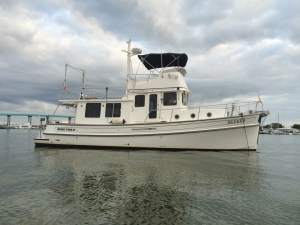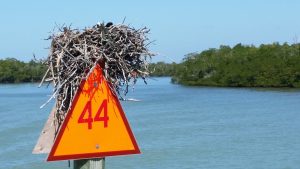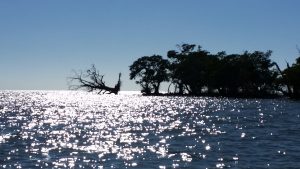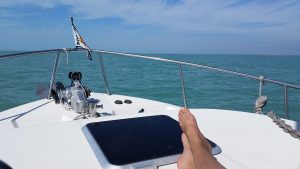Once the urge strikes to compose a novel, I draft a rough outline and launch into research. For my third novel this meant learning about boats–specifically Trawlers. Part of the story takes place on a trawler, so I needed to understand how they operate, navigate, smell, sound, look, and where to hide a body on one.
Using online research helps only up to a certain point. Cost, size, models, speed, and other performance facts about boats are readily available online. To fully capture the experience of being on such a boat, my BFF and her husband invited me to ride along. Meet hosts Caryn and Paul Frink. (South of Justice, book 1 of the Compass Crimes series, is dedicated in part to my BFF.)

Seeker
RESEARCH
For five days and four nights, I bunked in their guest cabin. The perfect hosts, they introduced me to life aboard the Seeker, a 37-foot, 22,600 pound, diesel-powered Nordic Tug 37. Aboard the Seeker, I learned the difference between seawater, fresh water, grey water, and black water (eeew). Captain Paul also explained the navigation equipment, maps, and the basic systems that keep the boat running smoothly whether powered by the engine or powered by the giant yellow power cable used while docked.
There are many key differences between piloting a boat and piloting an aircraft. The boating maps are huuuuge and very detailed. Navigating canals and waterways means watching for red and green signs with numbers, called markers. The markers guide boats through the deeper areas so boats don’t run aground. “Red, right, return,” became my mantra. Binoculars in hand, I tried to help find the markers as the horizon pitched up and down. The Seeker chugged along at a top speed of 8 knots. The Cessna 210 I fly cruises at about 175 knots, so yeah, boating is slower. More leisurely.
The trip began in Naples, Florida at the city dock made of wood. At lunch in Tin City, we saw a pelican try to swallow a beer can. Other pelicans even tried to steal it from him. Not the brightest creatures. I think they’ve become accustomed to human handouts. We traveled an inner passage of waterways south to Marco Island which had a floating cement dock. From there we headed into the Ten Thousand Islands between Marco Island and Everglades City.

Marker 44
The constant rocking meant learning how to walk differently. At first, I staggered like a drunk, but by the end of the week walking around became easier and less bruising. Paul and Caryn helped me resolve a few key issues with the plot of my next book. It involves a kidnapping, a trawler, and a navy brat who refuses to be a victim.

Unnamed island
Not only did my hosts help me find the perfect spot to use in my book, but they took me there and we anchored overnight. The term ‘dead calm’ has new meaning for me. We found a remote spot that turned pitch black at night. The only sound at night was the glub-blub of water against the hull. Creepy quiet. It would have been peaceful if I had not been thinking about the book. Eventually, the boat rocked me to sleep.
We saw dolphins playing on the ride back to Naples.

Bow candy or Trawler trash?
LOOPERS
Since we “crossed our own wake” on a mini loop, Caryn dubbed me a mini-looper. There is an entire society of Loopers, complete with a newsletter, blogs, and harbor hosts. They too, will play a part in the third book in the Compass Crimes–West of Famous.
The best part of the trip was spending time with Caryn, my dearest childhood friend. Thank you, Caryn and Paul, for putting up with a pesky stowaway who asked lots of questions and took notes and photos of all kinds of places. West of Famous is richer for this research.
Hubby calls it a vacation. I’m still calling it research. Ignore my tan.
Thanks so much for another great post, Joni. I look forward to receiving them!
Not sure where you ate lunch on Marco – but Tin City is in Naples.
Dear Keith, thanks for catching my goof up. I have put Tin City back in Naples. –Joni
Great article from a great author. Your experience sounds remarkable. I know what you mean by “dead calm” it’s a little freaky when it’s experienced out in the middle of nowhere. I enjoyed the details in the book and knew you had to experience in order to put such a great novel together. Looking forward to reading more of your novels and posts like these in the future.
Thank you, Michele!